If you are a taiko player in North America striving to be the best player you can be (whatever that might mean personally to you), then at some point you have probably thought to yourself: I should really go study in Japan. Then you say to yourself…”Self, what kind of crazy idea is that? You have responsibilities here. You have [college/a wife/a mortgage/kids/a sick cat]…you can’t go to Japan. Plus, don’t forget how much you love hamburgers!” So the Japan idea goes out the window.
But wait! There are opportunities out there to get a meaningful glimpse into that world without having to throw a wrench in the works. One such opportunity that came into existence recently is the Shidara Residency. Shidara has put together a program that feels like a mini apprenticeship. Their goal is to provide an authentic experience of what it means to be a taiko player in Japan. I had been playing taiko for less than a year when I first heard about it and I jumped at the opportunity and let me say, it was one of the best experiences of my life. Not to mention that it made a big difference in my understanding of taiko.
|
|
|
| We all posed for a group picture in front of a sakura tree in Toei cho. | During one of the workshops we learned Raku, a piece written by Shidara’s leader Chabo. |
This was Shidara’s first residency, and while it will most likely evolve and improve over time, they did an amazing job. The residency was two weeks long and took place in April of 2009. The bulk of the residency was spent living and learning alongside Shidara members. Shidara is very dedicated. They live their lives for taiko, 24/7/365. The key here is that you spend your time living as they live. This isn’t a program tailored to what they think North Americans would like to do while in Japan.
| This is what a typical day of the residency was like:
0515: Wake up. |
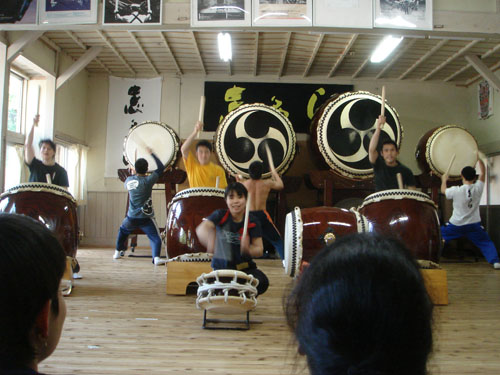 |
| Shidara put on a mini-performance for us. |
For the most part, this is what a typical Shidara member’s day would look like too. There are, of course, some differences. When we did uchi-komi it would last for 15-20 minutes instead of Shidara’s usual 1-1.5 hours. Our practices were structured into detailed morning and afternoon workshops. These workshops were a privilege to attend. I noticed the Shidara apprentices were in the back of each workshop paying close attention and eagerly taking notes. This was obviously a learning opportunity for them as well.
We had workshops covering Bachi and Fue making, equipment maintenance and care, uchi-komi (shime drill), Kihon (basics of Shidara’s style), dance basics (with guest instructor Akira Kataogi), Onikenbai costume history and dance background (with guest instructor Akira Kataogi), and accessories (chappa, shamisen, etc…). We also devoted a day to learning a song called Raku. This is an original composition by Shidara that they have written as a gift to the rest of the world. Their desire is for as many people as possible to learn and play this song, no strings attached. We learned it in a morning workshop and then played it for the local villagers that afternoon as a thank you for the wonderful barbecue lunch Shidara and the villagers made for us.
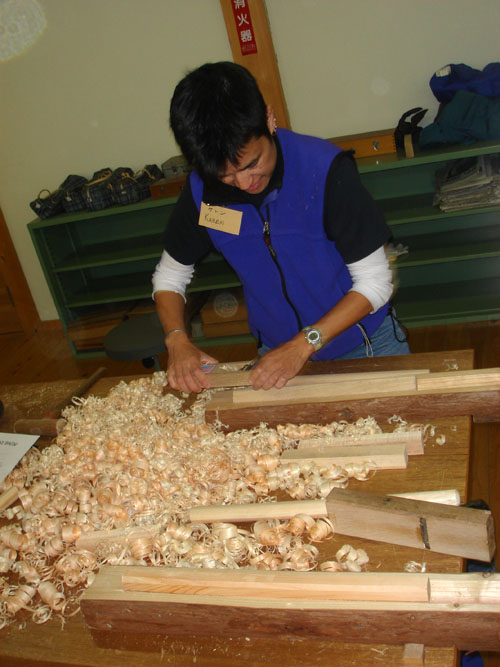 |
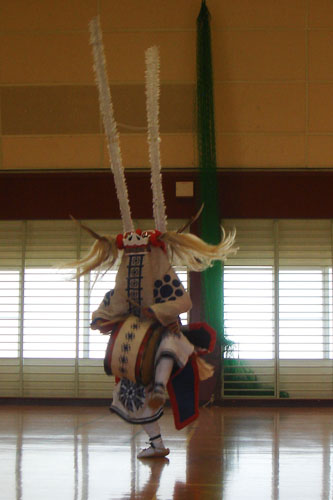 |
| We made bachi from scratch using locally grown hinoki. | Akira Kataogi performed for us during the dance workshop. |
Every aspect of their lives is focused on improving themselves as taiko players. They don’t just practice together, but they live together, which solidifies the group and allows them to draw inspiration from each other and their surroundings. The mountains they live in are often sources of inspiration for their music. And not just big things like that, but other things you wouldn’t necessarily think of…like using their chopsticks in their left hands while eating to improve coordination and dexterity. They truly dedicate their whole lives to taiko.
There is an unbelievable wealth of experiences in a trip like this. A blog post can’t even begin to capture it. An experience like this will increase the breadth and depth of your taiko life. So, visit other taiko groups, attend taiko conferences, see every show you can, listen to every CD, watch every DVD…your instructors didn’t get to where they are by practice alone and neither should you.
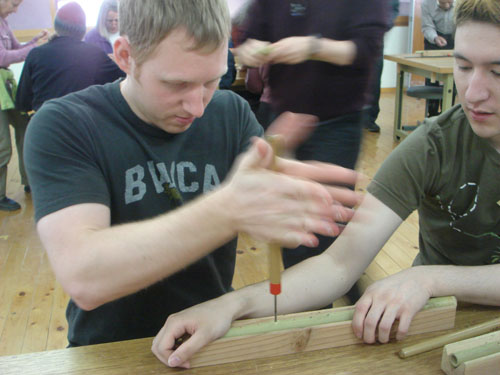 |
 |
| Here I am making a fue from local bamboo. | Shidara played for us at the train station as we left Toei cho. |
BTW: Shidara is coming to Boston in March of 2010, so if you want a taste of the Shidara Residency but don’t have the time or money for a trip to Japan, then consider a trip to Boston. You won’t regret it. More information can be found on Odaiko New England’s website.
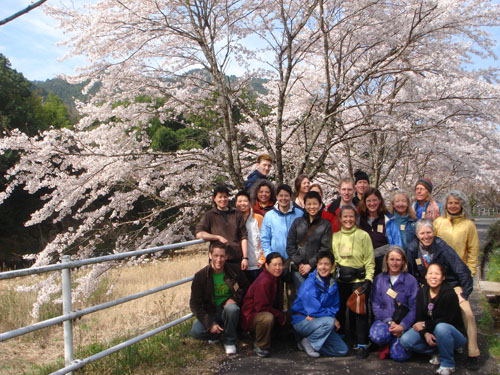
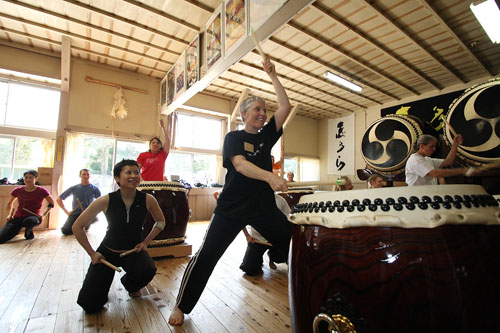




I’m interested in Taiko but there are no local clubs. Recently I came across Shidara and have been crazy about them ever since. I actually lived in Aichi Prefecture for 16 years so I kind of know the area – really beautiful countryside… I go back every year or so and am curious about the residency program. How much did it cost? (I’m not rolling in cash but can afford the airfare, trainfare etc)